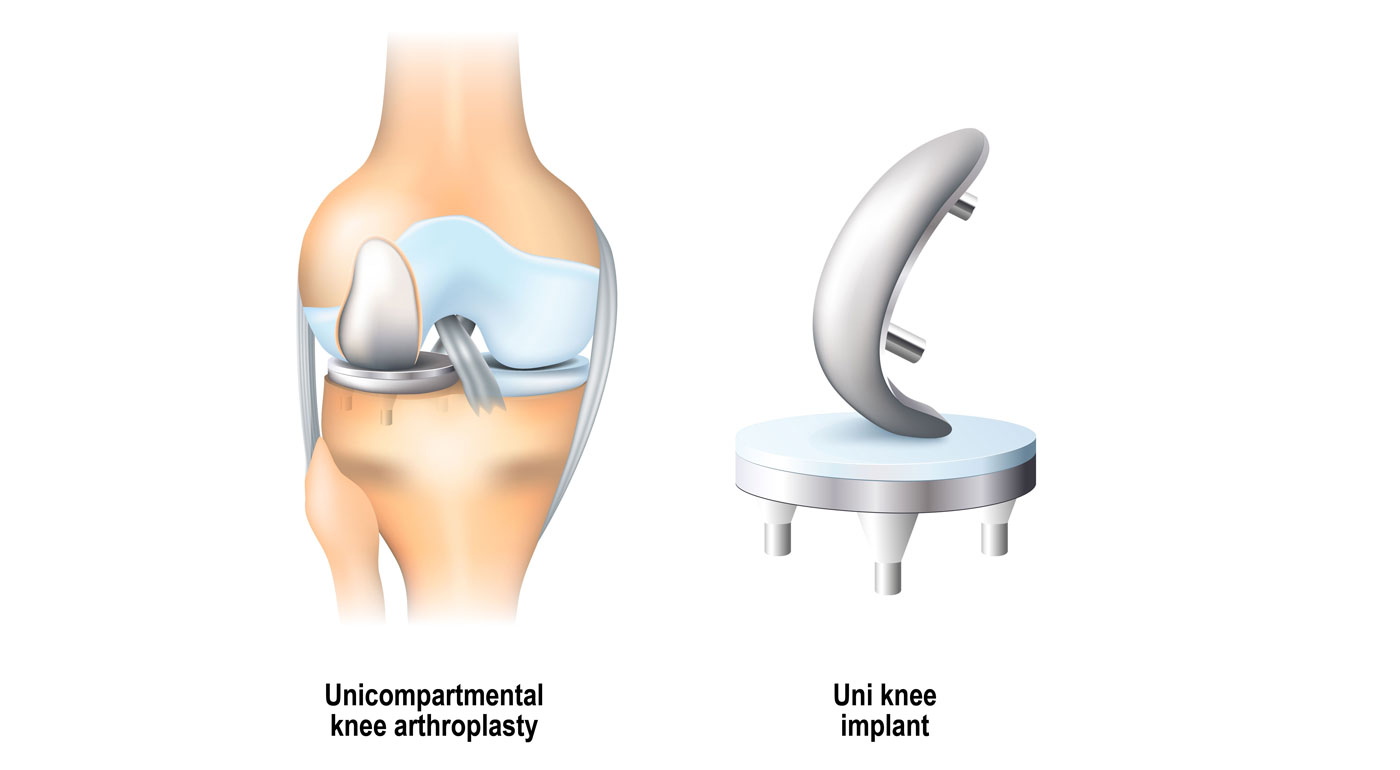Knee osteoarthritis
Knee arthritis causes pain, sleep interrupting, and difficulty walking, and it can even threaten a person’s ability to work.
Osteoarthritis is a wear and tear process of the knee joint. It’s like a degradation and disappearing act of the articular cartilage that makes up the joint surfaces, exposing the bone underneath.
The osteoarthritic process can occur because of trauma to the knee (particularly if there’s been damage or loss of a meniscus in the knee), and fractures, infection, and rheumatological conditions can also predispose a person to knee osteoarthritis.
Knee osteoarthritis can affect all areas of the knee. The knee is divided anatomically into three ‘compartments’. The ‘medial’ or inside side of the knee is the joint zone between the medial femoral condyle and the medial tibial plateau, the ‘lateral’ or outside compartment houses the joint area between the lateral femoral condyle and the lateral tibial plateau, and the third compartment, the ‘patellofemoral’ compartment, involves the kneecap and the front of the thigh bone. If the osteoarthritis affects all three zones, it’s known as pan-compartmental osteoarthritis.

What does knee osteoarthritis feel like?
Pain and swelling after activity are the hallmarks of osteoarthritis, and many people describe their knee as feeling stiff, especially first thing in the morning or if they’ve been immobile for a while. The knee might become swollen at the back (known as a Baker’s cyst), and sometimes the knee becomes permanently ‘bow-legged’ or ‘knock-kneed’ in shape. You may find your knee grinds or makes a creaking noise when bending.
Initially, you might feel some pain going up and down stairs or when twisting or kneeling on the knee, but as the arthritis progresses, pain may become ever-present or disturb your sleep. There may be wasting of the muscles supporting your knee (especially your quads muscles on the front of the knee). The knee may also feel unstable or as if it may give way.











